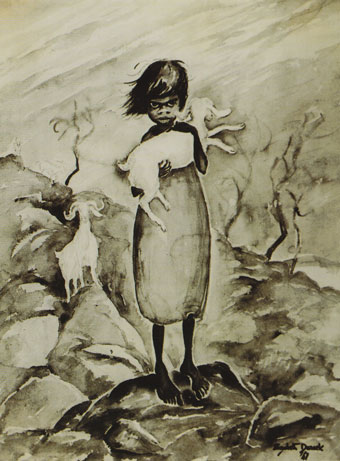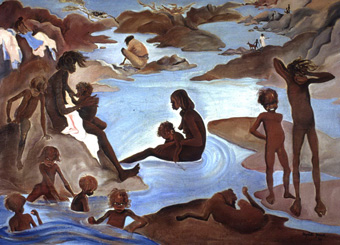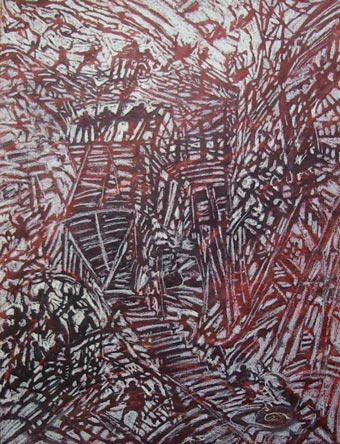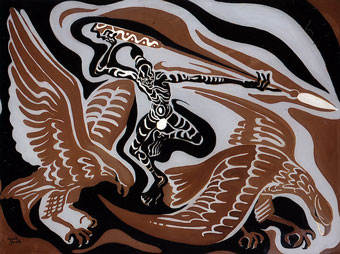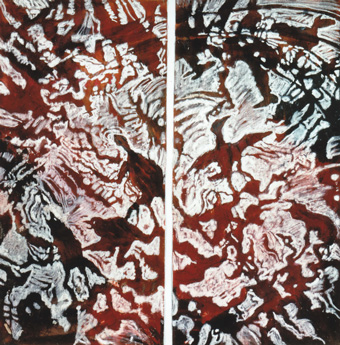elizabeth durack
overview
The art of Elizabeth Durack is an integral part of Australia’s cultural heritage — part of our 'blood’s country'. Long before it became acceptable or even fashionable her art challenged our perceptions of our land and its people...
Maureen Smith
catalogue notes from Out of Sight – Out of Mind
Alexander Library, Perth Cultural Centre, February – March 1991
Elizabeth Durack’s portrayal of figures within the Western Australian Kimberley landscape and the transmuting of its landscape into figures is a recurring theme in her work. Interwoven with the whole is an Australian-Irish-Aboriginal sensibility that reflects the artist’s background, outlook and experience.
Over a long productive life the art of Elizabeth Durack evolved from simple line drawings, through lyrical watercolours, to part-abstraction and allegorical paintings. Rare among artists, Durack’s gift reached its peak towards the end. The work of her last creative phase — The Art of Eddie Burrup — transcends all that went before.
A substantial body of written material complements the visual works.
Elizabeth Durack was the third of six children born to Michael Patrick Durack and Bess Ida Muriel (b. Johnstone); and a granddaughter of the pioneer Irishman Patrick (Patsy) Durack, a life recorded by Mary Durack in the Australian classic Kings in Grass Castles.

